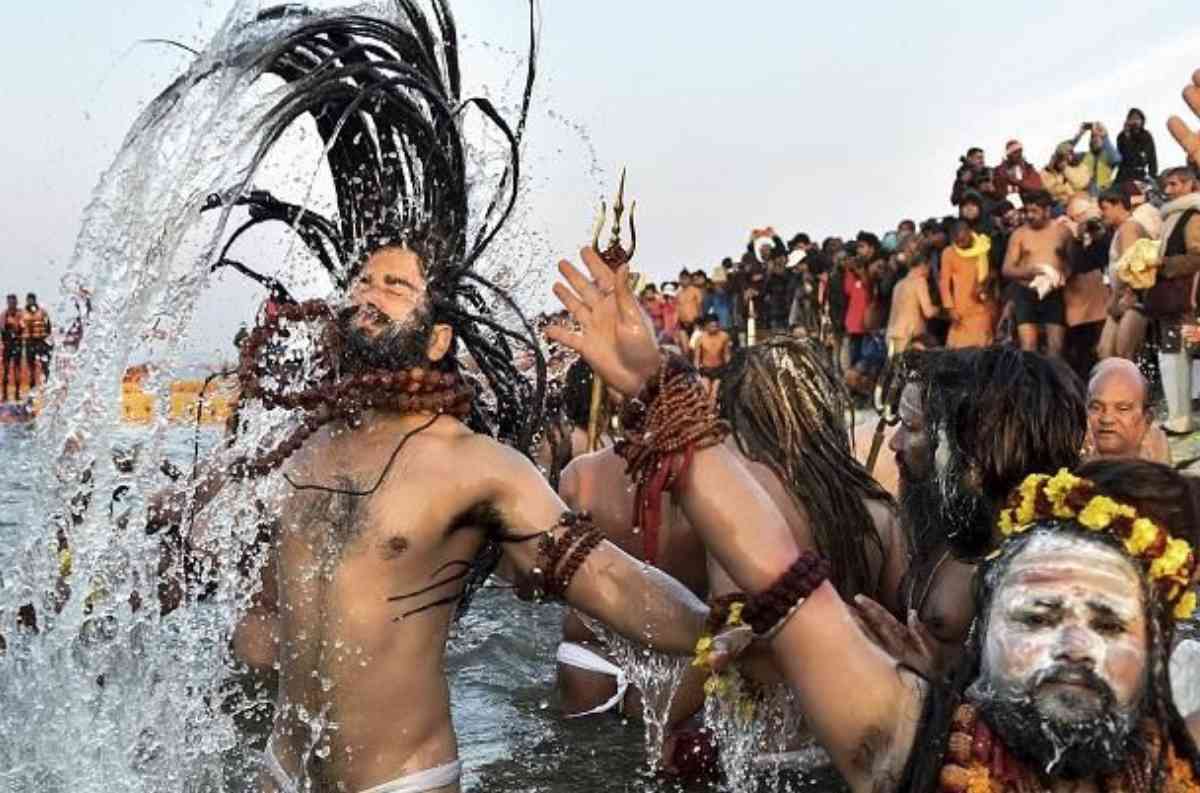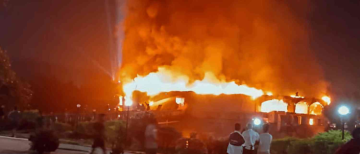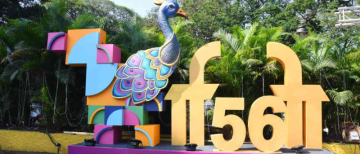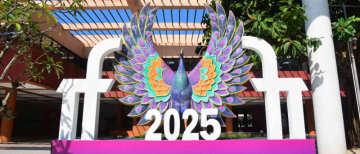On Tuesday, thousands of naked Hindu ascetics, armed with tridents, swords, and drums, led millions of Hindu pilgrims in a sacred plunge into the freezing waters at the confluence of the Ganges, Yamuna, and the mythical Saraswati rivers in northern India. This marked the first of a series of holy baths during the Maha Kumbh Mela, a festival that draws the largest religious congregation on Earth.

The Grand Procession
As the sun rose over Prayagraj, the ascetics, known for their distinctive dreadlocks and marigold crowns, made their way towards the holy site in a grand procession. Chanting religious slogans in praise of Lord Shiva, they marched, rode chariots, and played drums and horns, creating an awe-inspiring spectacle that was accompanied by a chorus of spiritual fervor.
The Spiritual Significance of the Kumbh Mela
The Maha Kumbh Mela, celebrated every 12 years, officially began on Monday, with over 15 million pilgrims bathing in the sacred waters. Officials anticipate that, over the course of six weeks, the festival will draw over 400 million people to the site, as devotees participate in religious rituals aimed at attaining spiritual merit and cleansing sins.
Hindus believe that immersing oneself in the holy waters of the confluence, known as Triveni Sangam, will absolve them of past transgressions and release them from the endless cycle of birth and rebirth. As pilgrims descended into the freezing waters, there was an undeniable sense of devotion, with many expressing feelings of spiritual rejuvenation.
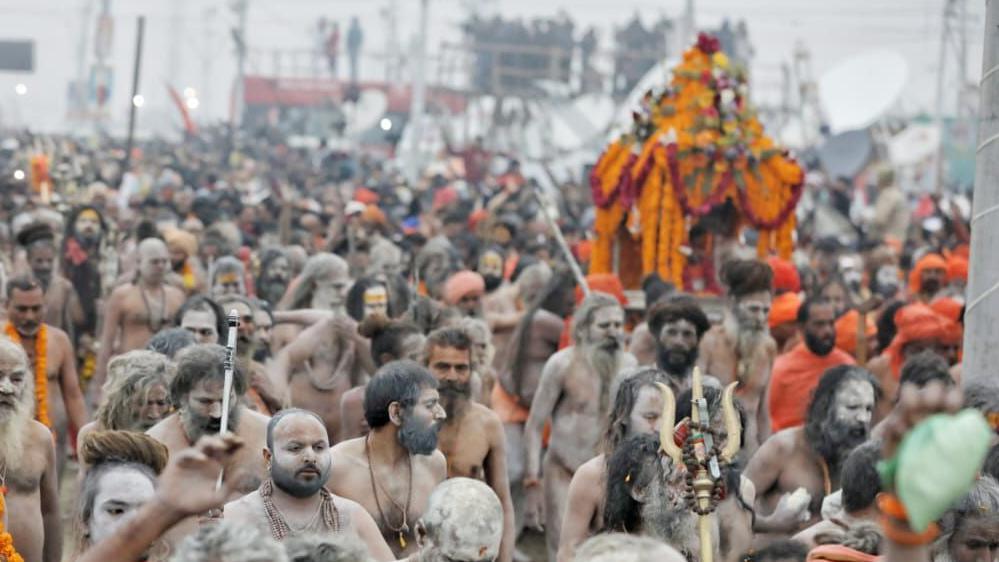
Venkatesh Ramaling, a tech specialist from southern Pune, described the experience as deeply inspiring. "It is amazing to see how people are just diving into such cold water. People have such strong faith here, and looking at them, I feel inspired,” said Ramaling. "After taking the bath, I feel really good and full of positivity."
Mythological Roots of the Kumbh Mela
The origins of the Kumbh Mela trace back to a mythological tale in which the god Vishnu wrested a golden pitcher, known as the Kumbh, from demons. The pitcher contained nectar that granted immortality, and Hindus believe that a few drops fell in the cities of Prayagraj, Nasik, Ujjain, and Haridwar — the four sacred sites of the Kumbh. The festival rotates between these sites, with the date of each celebration determined by a special alignment of the sun, moon, and Jupiter.
A Grand Setup for the Largest Religious Gathering
This year’s Maha Kumbh Mela is the largest in history, with Prayagraj’s riverbanks transformed into a sprawling city to accommodate the massive influx of pilgrims. A tented city, built with an investment of over $765 million, provides for the needs of both the ascetics and millions of visitors. The city features 3,000 kitchens, 150,000 toilets, and a security force of 50,000 personnel who ensure the smooth flow of visitors and maintain law and order.
For Stephen Barker, a New York-based artist who witnessed the festival firsthand, the Maha Kumbh Mela represents a unique convergence of spiritual pursuit. "It is some culmination, some distillation of so much spiritual pursuit, so it is fascinating to see everyone with one purpose," he said.
Advanced Technology for Crowd Management
The festival’s setup also includes state-of-the-art crowd management techniques, such as 2,700 cameras many powered by artificial intelligence — to monitor crowd density and movement. This sophisticated technology allows authorities to send real-time updates to central control rooms and deploy personnel as necessary. In the past, the festival has been marred by tragic stampedes, prompting efforts to ensure the safety of participants.
Pilgrims Make Their Way to the Sacred Waters
As millions of pilgrims flocked to the riverbanks on Tuesday, many brought their belongings along — from food and blankets to bags filled with offerings. Whole families and groups marched in vast, coordinated lines, making their way to the sacred bathing spot. Authorities continued to sound out safety precautions, advising attendees to follow organized paths and avoid potential dangers.
The Role of Naga Sadhus at the Kumbh Mela
Among the spiritual leaders present were the Naga Sadhus, ascetic men who have long been associated with Hinduism’s Lord Shiva. These holy men, once mercenary warriors, continue to practice austerities and uphold ancient traditions. Dressed in minimal clothing and smeared with ash, they often serve as protectors of Hindu spirituality.
Sri Digambar Ishwargiri, a Naga Sadhu who journeyed from Junagadh in western India, spoke of the significance of the Kumbh bath. "This is the holy place for salvation," Ishwargiri explained, sitting cross-legged beside a ceremonial fire and trident. "We safeguard our faith. We are the soldiers of the Hindu religion."
A Time for Devotional Practices and Austerities
The most auspicious moments of the Kumbh Mela occur on select days, when Hindu ascetics lead massive crowds into the river at dawn for their spiritual cleansing. While some devotees stay for the entire six-week festival, many come for specific ritualistic dates that are believed to hold the most profound spiritual significance.

Not only is the festival a time for religious bathing and prayer, but it is also an opportunity for pilgrims to attend spiritual discourses and engage in meditative practices. Devotees who visit the camps set up by the ascetics seek blessings and learn about Hindu philosophy and spirituality.
A Celebration of Collective Faith
For the broader Hindu community, the Kumbh Mela serves as a reflection of collective faith. The festival is not just about the ritual of bathing in the holy rivers; it’s about coming together in unity with a shared purpose of spiritual growth and renewal. This grand gathering reflects the indomitable strength of faith, as individuals from all walks of life find themselves part of a vast spiritual movement.
Authorities expect the ongoing festival to continue to attract visitors, both from within India and abroad, throughout its six-week duration. With global attention focused on the Maha Kumbh Mela, India once again showcases its rich cultural and spiritual heritage, while reaffirming the significance of the sacred rivers in Hinduism. Whether as a devout pilgrim or a curious onlooker, the Kumbh Mela promises a once-in-a-lifetime experience that encapsulates the essence of India’s spiritual traditions and devotion.
With inputs from agencies
Image Source: Multiple agencies
© Copyright 2024. All Rights Reserved Powered by Vygr Media.

